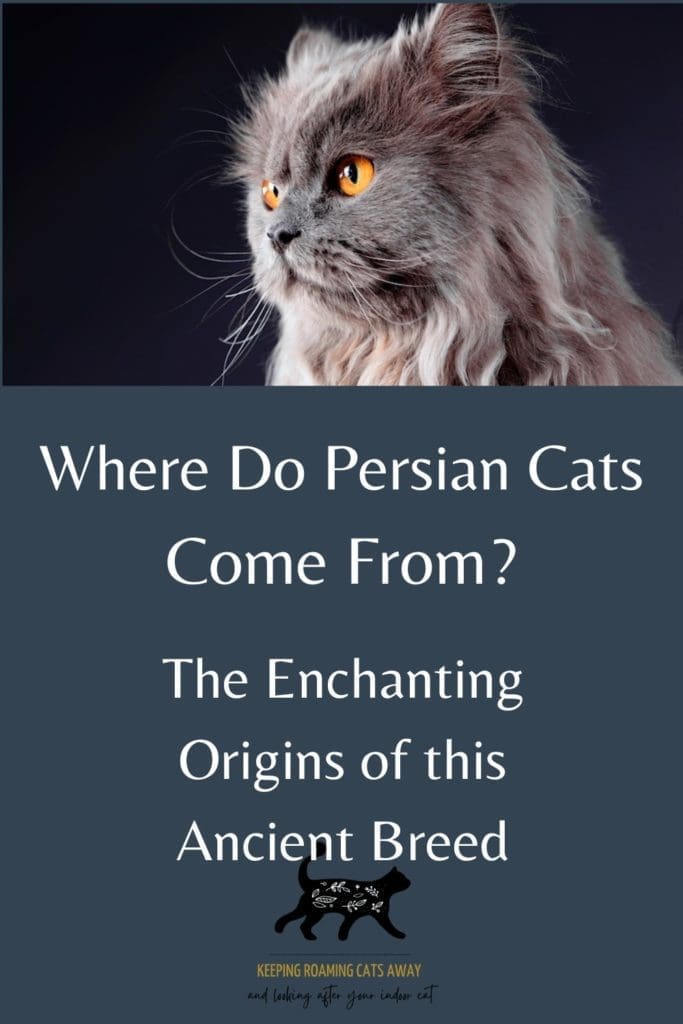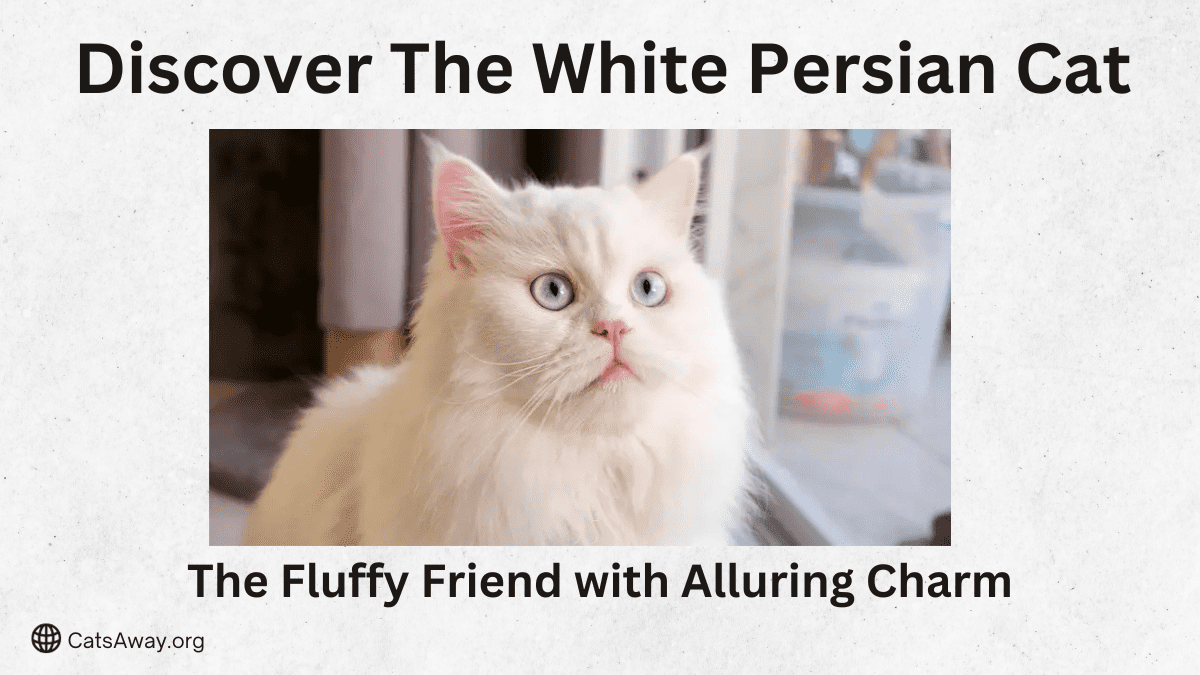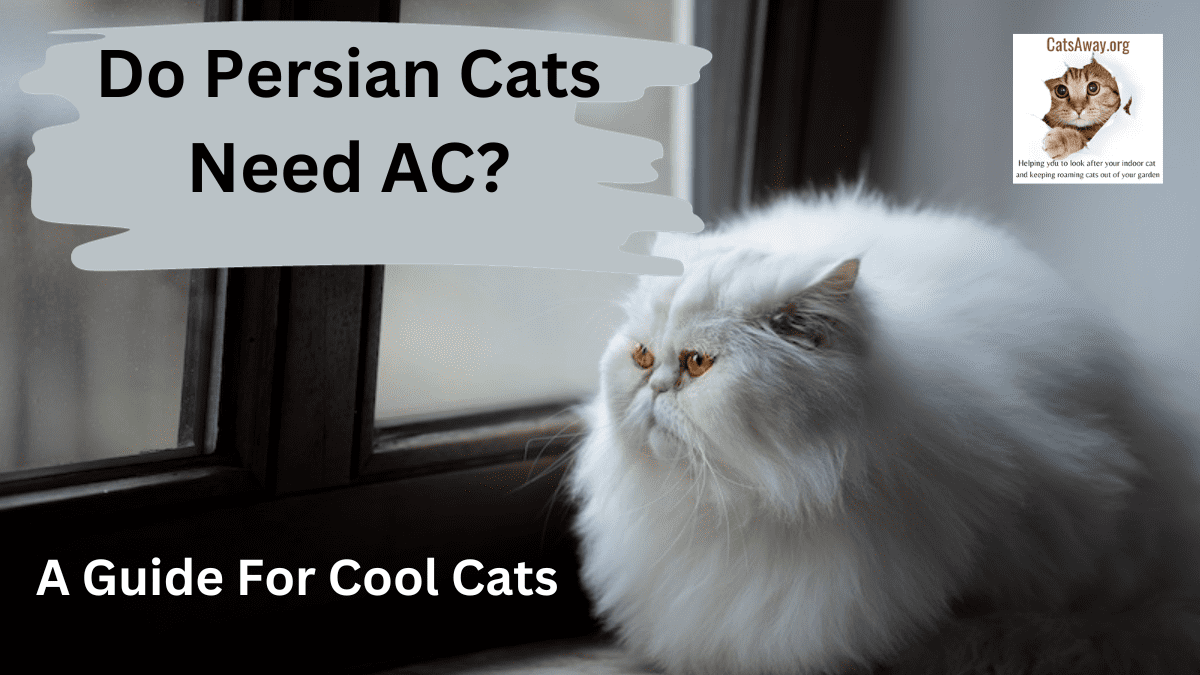The origin of Persian cats has always been a topic of fascination for cat enthusiasts. Their striking appearance and luxurious long fur make them one of the most easily recognized and beloved breeds.
Delving into their ancestry can provide intriguing insights into the history and development of these majestic cats.
The true beginnings of Persian cats remain somewhat shrouded in mystery. It is believed by some that the first documented ancestors of Persians might have been imported into Italy from Khorasan, an area in what is now Iran, as early as around 1620.
However, stronger evidence points towards long-haired cats being exported from Afghanistan and Iran in later centuries.
European diplomats stationed in the Middle East played a significant role in introducing Persians to the Western world. In the mid-1800s, these diplomats brought long-haired cats back to England and other European countries, igniting the breed’s popularity.
Though their exact origins remain uncertain, it is clear that Persians have been captivating hearts for many generations.
Origins and History
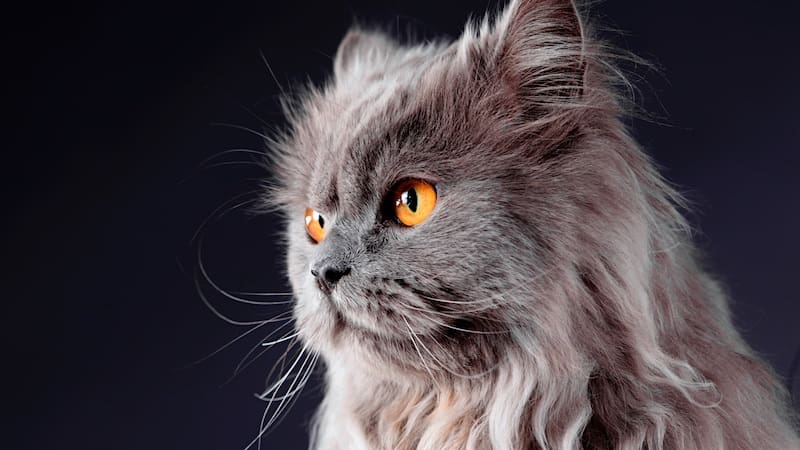
Persian Cats and Persia
Although the name suggests a connection to Persia (present-day Iran), Persian cats’ ancestry can be traced to Western Europe. They were introduced to Europe through contact with Persia and the Ottoman Empire.
Pietro della Valle
In the 17th century, Italian traveler Pietro Della Valle brought the first long-haired cat to Europe from Khorasan, a region located between modern-day Iran and Afghanistan. However, there is stronger evidence for the breed’s origin in Afghanistan and Iran rather than Khorasan.
Angoral Cats
Persians gained popularity in Europe during the 19th century. At this time, crossbreeding with Angoras, another long-haired cat breed from Turkey, helped develop the appearance of the Persian breed.
Selective Breeding
Breeding throughout the 19th and 20th centuries led to the distinct traits of modern Persian cats, such as round heads, small ears, and large, round eyes. The various coat colors and patterns seen in Persian cats today are also results of this breeding history.
Appearance and Coat

Long-Haired Cats
Persians are a medium- to large-sized breed known for their distinctive long-haired coats. They are characterized by their round, flat faces and short muzzles, which make them easily recognizable. Their long, soft fur requires regular grooming to keep it healthy and free from tangles.
Colors and Patterns
Persian cats have a wide range of coat colors and patterns, making them a diverse and visually appealing breed. Some of the available coat colors include solid shades, silver and golden, smoke, and shaded colors. In addition, they also display various tabby patterns, particolors, and bicolors that add to their unique appearance.
Solid Colors: Persian cats can be found in a variety of solid colors, such as black, grey, white, blue, and more.
Silver and Golden: This color combination gives the coat a metallic sheen, making the cat appear regal.
Smoke and Shaded Colors: Smoke Persian cats have a darker base coat color, while shaded Persians have a lighter base with darker tips on their fur.
Tabby Patterns: Tabby Persians display the classic striped pattern in various forms such as mackerel, classic, and spotted.
The coat colors and patterns of Persian cats are not only diverse but also often associated with their eye colors. For example, blue-eyed Persians typically have Himalayan coats. This wide range of coat and eye color combinations contributes to the breed’s enduring popularity and charm.
Temperament and Personality
Persian cats are known for their sweet and gentle temperament. These felines have expressive eyes and often become quite attached to their human companions. They are typically easy-going, making them an ideal companion for many.
Despite their calm demeanor though, Persians can be surprisingly playful. They enjoy engaging in interactive games and love to explore their environment. However, they are not known to be overly energetic or demanding of physical activity.
When it comes to affection level, Persians are generally quite loving towards their owners. They enjoy being held and often show affection by curling up in laps. This also extends to guests as they are usually friendly and welcoming towards newcomers.
Persian cats showcase moderate intelligence, often displaying clever and curious behaviors. However, their independence is quite low, requiring more human interaction and attention compared to something like a Sphynx cat for example. This makes them less suitable for those with demanding lifestyles.
The vocalization of Persian cats is relatively low, meaning they are not particularly noisy pets. They may occasionally express their needs with soft and gentle meows, but overall, noise levels are minimal with these felines.
In summary, the temperament and personality of Persian cats make them perfect companions for those seeking a gentle, loving, and low-maintenance pet.
Health and Care
Persian cat owners should be aware that like almost all pedigree cat breeds Persians are prone to certain health problems.
Common Health Issues
Several Persian cat health issues are due to their flattened faces and long coats. One problem they might encounter is shortness of breath with exertion, as they are a brachycephalic breed. They are also prone to allergies, which is a concern for all brachycephalic cat breeds.
Frequent eye injuries, dental disease, and malocclusion are other health issues that a Persian cat might experience. Kidney disease, particularly polycystic kidney disease, is also a concern for this breed. Regular visits to the veterinarian and keeping up with vaccinations can help maintain your cat’s health.
Grooming and Care
Daily grooming is essential for a Persian cat due to being longhaired cats. Their coats come in various colors and patterns, which can result in tangles and matting if not cared for properly. Regular brushing helps prevent matting and maintains the health of the coat.
In addition to grooming, a Persian cat requires regular bathing to keep their fur clean and healthy. Weight management through a complete and balanced diet, regular exercise, and a stimulating environment also contribute to the overall well-being of these cats.
Persian cats aren’t hypoallergenic due to their long coat. If you suffer from allergies you may want to consider using a professional groomer.
Pet Insurance
Given the potential health issues a Persian might face, it could be beneficial for a cat owner to consider pet insurance. This can help cover the costs of veterinary care and treatment, ensuring that your Persian cat receives the best possible care throughout its life.
Breeding and Breeders
By the 19th century, cat breeding had become a popular upper-class pursuit, and Persian cats were among the breeds selectively bred for their long hair.
In England, a Persian cat participated in the first organized cat show in 1871. Breeders have been making kittens available between twelve and sixteen weeks of age. These breeders are dedicated to maintaining the health and purity of this unique breed.
They ensure that Persian cats are both hardy and healthy, as they’re not more prone to illness and respiratory infections than other breeds.
A well-bred Persian cat exhibits certain characteristics: a round face, short muzzle, and large eyes. Their long, thick fur comes in a variety of colors, including black, cream, and blue. Their eye colors range from copper to blue-green. Breeders continue to follow these standards when selecting cats for breeding.
Caring for a Persian cat involves certain responsibilities, such as daily face washing due to their large eyes and propensity for tearing. Breeding these cats focuses on maintaining their aesthetic and health qualities, while also considering their suitability for colder climates. With its silky soft fur, a Persian cat is an excellent choice for households in chillier regions.
Role in Popular Culture
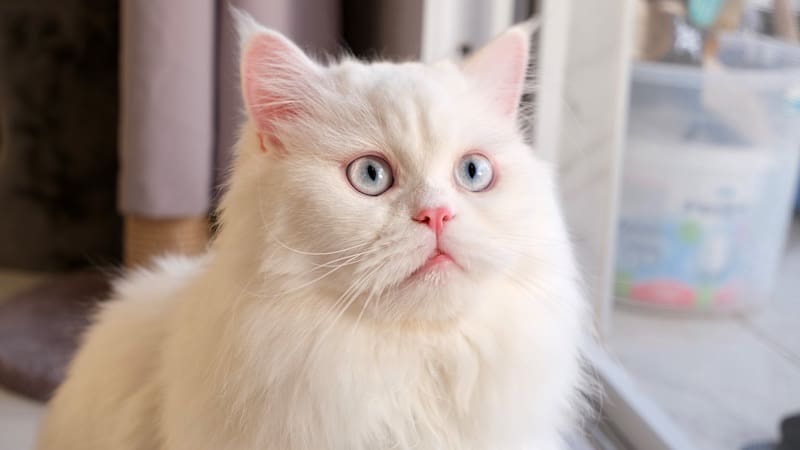
Persian cats have had a significant role in popular culture throughout history, even gracing the presence of royalty. Queen Victoria, for instance, was known to have a fondness for these furry felines, owning several during her reign, further popularizing the breed across the British realm.
There are two types of Persian cat that have been widely popularized: the Doll Face Persian and flat-faced Persian. The doll face Persian cat features a more traditional appearance, while the flat-faced Persian cat, recognized by its extreme flat nose, has gained popularity in recent years as a result of selective breeding.
The Cat Fanciers’ Association (CFA), the world’s largest registry of pedigreed cats, consistently ranks Persian cats as one of the top breeds. In 2018, they held the position as the fourth most-registered breed, a testament to their popularity.
In the beginning, Persian cats were imported into European cities like Rome and potentially found their ancestry in countries like Egypt. As their popularity grew, the breed started to branch out in various regions, with the British taking a keen interest in these beautiful felines.
In the world of cinema and television, the Persian cat often makes an appearance, showcasing their gentle temperament. Due to their long, silky coats and expressive eyes, they are a fan favorite among moviegoers and television audiences alike.
Variations and Related Breeds
The Persian longhair, also known as the Persian cat, is a distinguished breed with a round face and short muzzle. These cats come in a variety of colors and patterns. Among their close relatives is the exotic shorthair, which shares similar features but has a shorter coat.
In addition to the Middle Eastern roots, Persian cats also have links to India, where they were admired for their luxurious coats. Siamese cats, although a distinct breed, have a historical relationship with Persian cats, as both were considered prestigious among pet owners in the past.
As Persian cats moved westward, their characteristics were refined through selective breeding.
Compatibility with Families and Other Pets
The Persian cat is known for its easy-going, docile nature, making them a great fit for families. They often enjoy being petted and have been known to become affectionate lap cats. The Persian cat possesses a dignified air which helps them stand out even more.
When it comes to their personality traits, the Persian cat is a laid-back and calm cat breed. Though they crave companionship, making them pet-friendly, they also love to play. A Persian cat will run, jump, and chase toys with enthusiasm, showcasing their playfulness.
In families with kids, Persian cats are typically kid-friendly due to their adaptable nature. They can bond with children and adults alike, as they appreciate the attention and care they receive. The Persian cat is an ideal family pet, given its balanced combination of gentleness and activity.
As for compatibility with other pets, a Persian cat can generally coexist peacefully with dogs and other cat breeds. Their docility and good-natured attitude contribute to this ability. However, it is important to monitor their interactions, especially at the beginning as they all adapt to each other’s presence. Watch for these 3 warning signs when introducing new cats.
Interesting Facts
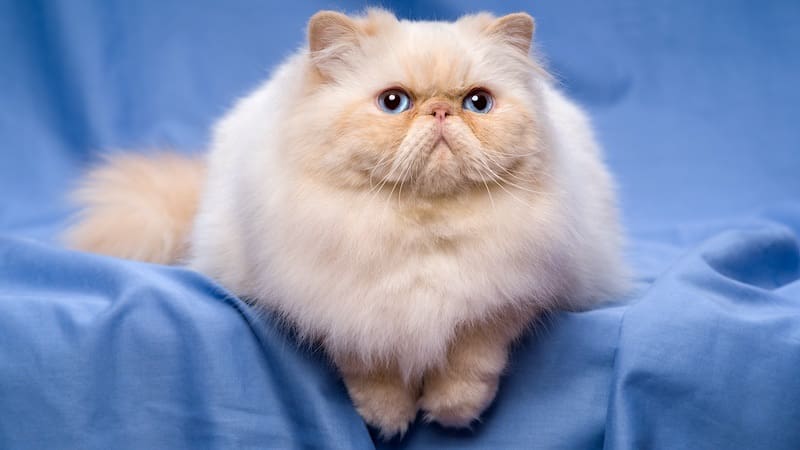
The origins of the Persian cat are still somewhat mysterious, but as you have learnt, there are 2 camps, one believes that their ancestors were longhaired cats imported to Italy from Khorasan in the 17th century, while the other camp suggests they came from Afghanistan and Iran.
There’s a case for both arguments.
What we do know is that the breed was popularized in Europe by travelers like Italian explorer Pietro Della Valle and French astronomer Nicolas-Claude Fabri de Peiresc.
One of the major turning points in the history of the Persian cat was when a British cat enthusiast named Frances Simpson published a book titled “The Book of the Cat” in 1903. This work helped propel the breed to new heights of popularity and laid the foundations for cat shows and breed-specific groups.
The Persian cat competes in cat shows and they are often divided into various groups based on their coat colors and patterns. One of the most famous (and competitive) is the silver and golden group.
These Persian felines are domestic cats, meaning they have been bred and raised to be pets, rather than feral or wild. In fact, their friendly and generally placid demeanor makes them ideal companions for many people, including families and those living in apartments.
Though they may appear regal and elegant, the Persian cat is not without its fair share of interesting history. For example, in the 19th century, a Persian cat named Affleck made headlines as the first recorded instance of a cat surviving a fall from the Eiffel Tower.
They are one of the most popular breeds and as such can be expensive due to demand. Find out how much Persian cats are here.

